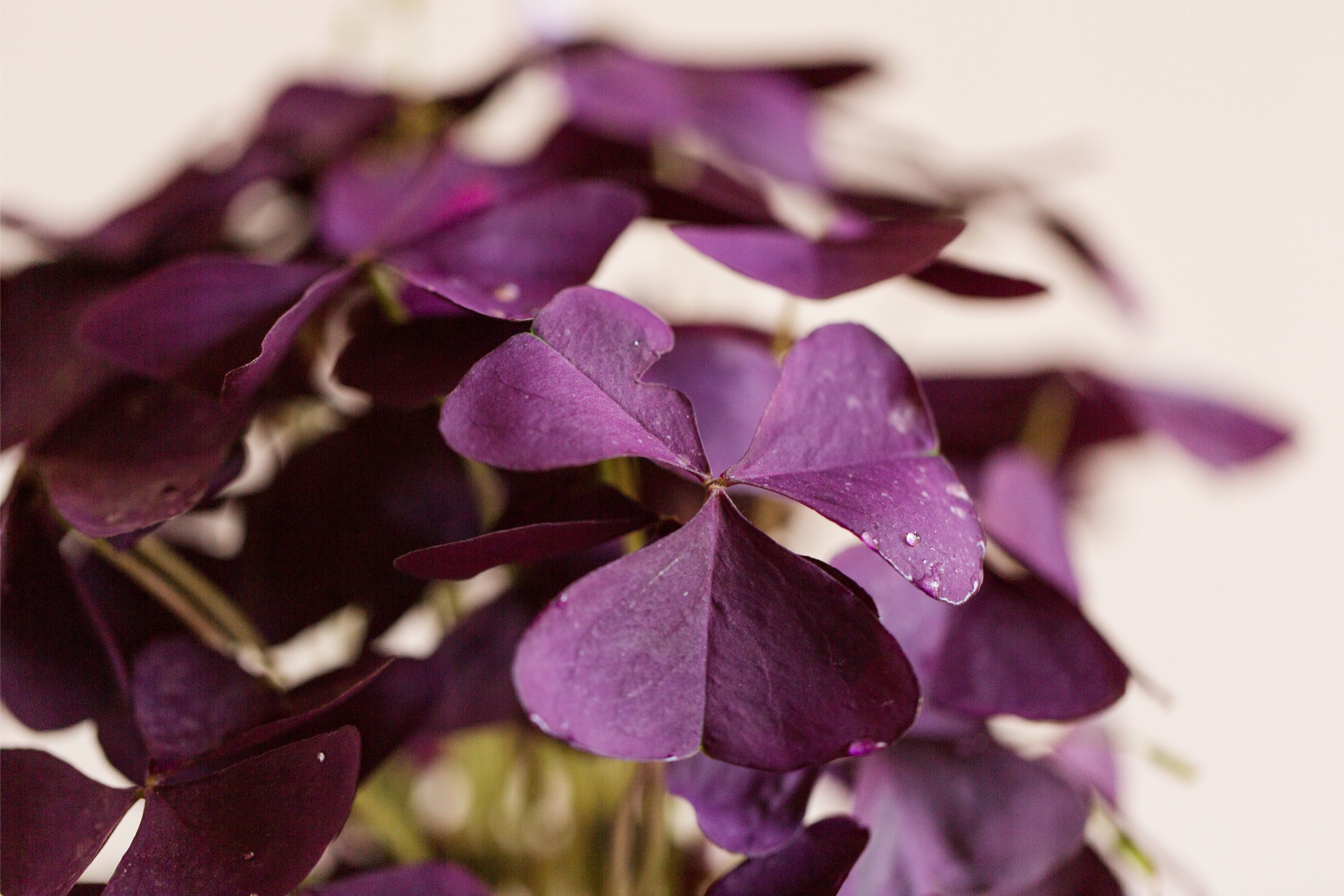False shamrock
(Oxalis triangularis)

Description
Oxalis triangularis, commonly known as the Purple Shamrock or False Shamrock, is a popular indoor and outdoor plant species that belongs to the Oxalidaceae family. This perennial plant is native to Brazil and other parts of South America and is known for its distinctive triangular-shaped leaves that range from deep green to purple. In this article, we will dive deep into the world of Oxalis triangularis, exploring its unique characteristics, growth requirements, and potential uses. Taxonomy and Classification The scientific name for Oxalis triangularis is derived from the Greek words "oxys" and "halos," which mean "sour" and "salt," respectively. The name is a reference to the plant's sour taste, which is attributed to the presence of oxalic acid. The triangularis epithet refers to the shape of the leaves, which are triangular in appearance. Oxalis triangularis belongs to the Oxalidaceae family, which comprises more than 900 species of herbs, shrubs, and trees. Other notable species in this family include the Wood Sorrel (Oxalis acetosella) and the Yellow Wood Sorrel (Oxalis stricta). Characteristics Oxalis triangularis is a low-growing plant that typically reaches a height of 8-12 inches (20-30 cm) and spreads up to 12-15 inches (30-38 cm) wide. The plant's leaves are its most distinctive feature, with each leaf measuring up to 1-2 inches (2.5-5 cm) long and wide. The leaves are triangular in shape and come in various shades of green, purple, and burgundy. Some cultivars also have variegated leaves with contrasting colors. The plant produces small, funnel-shaped flowers that bloom in the spring and summer. The flowers are typically white, pink, or purple and have five petals. The plant's fruit is a small capsule that contains several seeds. Growth Requirements Oxalis triangularis is a relatively easy plant to grow and care for, making it a popular choice for both novice and experienced gardeners. Here are the growth requirements for this plant: Light: The plant prefers bright, indirect light and can tolerate some direct sunlight. However, prolonged exposure to direct sunlight can scorch the leaves. Temperature: Oxalis triangularis thrives in temperatures between 60-75°F (15-24°C). It can tolerate cooler temperatures but is sensitive to frost. Soil: The plant prefers well-draining soil that is rich in organic matter. A potting mix with equal parts of peat moss, perlite, and vermiculite is ideal. Water: The plant prefers moist but not waterlogged soil. Water the plant when the top inch of soil feels dry to the touch. Do not allow the soil to dry out completely. Fertilizer: The plant benefits from regular fertilization during the growing season. Use a balanced liquid fertilizer every 2-3 weeks. Propagation Oxalis triangularis can be propagated by division or seed. Here's how: Division: In early spring, carefully divide the plant's rhizomes and plant them in separate containers. Ensure that each division has at least one healthy stem and a few leaves. Seed: Collect the plant's seed capsules when they are dry and brown. Sow the seeds in a well-draining potting mix and keep the soil moist. The seeds will germinate in 1-2 weeks. Uses Oxalis triangularis is primarily grown as an ornamental plant for its attractive foliage and flowers. The plant is commonly used as a houseplant, but it can also be grown outdoors in mild climates. The plant is often used in container gardens, rock gardens, and as a groundcover.
Taxonomic tree:







